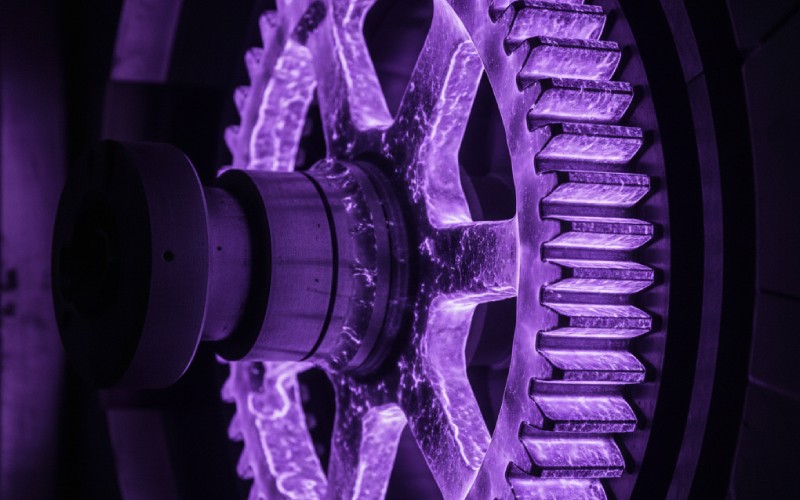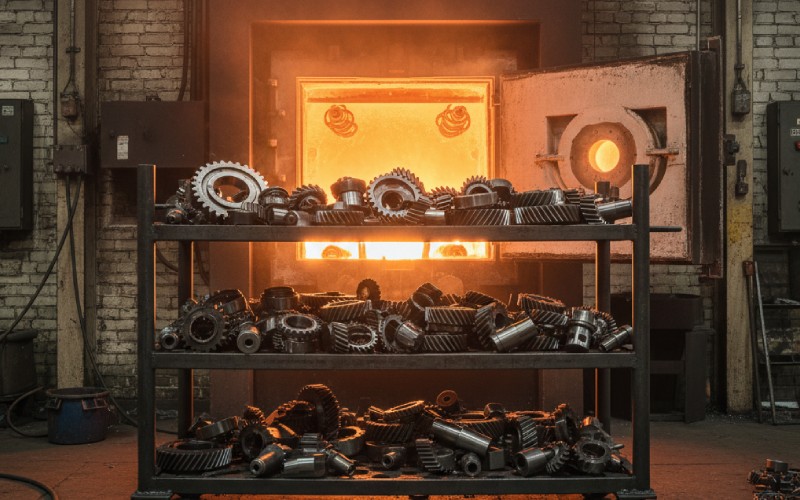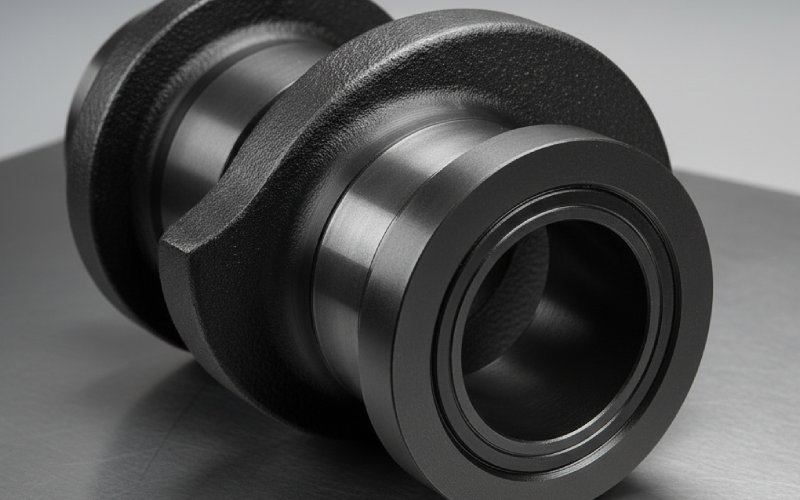Let Istar help you get started on your project with our experience and know-how!
Upload your design files and production requirements and we will get back to you within 30 minutes!

A nitriding finish is a special way to treat metal parts. It helps make them very hard, strong, and able to last for a very long time. You can think of it like giving your metal parts a strong coat of armor. This armor stops them from getting scratched, worn out, or rusty. If you work with metal parts that have to be strong, this article is for you. We will tell you about the nitriding process in an easy way. You will learn how it works, why it is a good thing, and how it can help you make better products.
The nitriding process is a kind of heat treatment. It is a surface treatment process that is used to harden steel and other ferrous metals. The main idea is to put nitrogen onto the outside of a metal part. You do this by heating the workpiece in a special place that has a lot of nitrogen. The nitrogen soaks into the metal. This is called diffusion. This process makes a very hard outer layer.
This outer layer is filled with tiny, hard bits called nitride precipitates. This makes the surface very, very hard. It is different from other ways to harden metal, like carburising. The nitriding process is done at a lower temperature. This is a very good thing because it means the parts do not bend or change their shape much. There is very little distortion, so your parts stay the correct size. The nitriding process is a wonderful way to make parts stronger without the problems that come from using high heat.
One of the best things about nitriding is the great corrosion resistance it gives to parts. This means it helps stop rust. When a part is nitrided, a special layer is made on the very top. This is called the compound layer. This layer is usually made of iron nitride. It works like a strong wall. This wall stops air and water from getting to the metal underneath. This helps to stop rust and other kinds of wear and corrosion.
For many parts, having good corrosion resistance is just as important as being hard. For example, think about firearm components or parts that are used in wet areas. The corrosion resistance that comes from nitriding means these parts will last much longer. Even for a metal like stainless steel, which is already good at resisting rust, nitriding can make its corrosion resistance even better. The nitride layer improves the resistance to wear and keeps the part safe from damage. This extra corrosion resistance is a very important benefit.
The process temperature for nitriding is a very big deal. It is usually done at a heat between 400°C and 575°C (750°F and 1065°F). This temperature is picked very carefully. It has to be hot enough for the nitrogen diffusion to work. But it cannot be too hot. If the process temperature gets too high, it can weaken the inside of the part. It can mess up the strength that the part got from an earlier heat treating step.
The low process temperature is a big good point for nitriding. Other ways to harden metal, like carburizing, use much hotter temperatures. That high heat can make the workpieces bend or change their shape. With nitriding, there is very little distortion. This means less work is needed to fix the part after it is treated. The workpiece keeps its size and shape. This can save you a lot of time and money.

The surface finish of a part after nitriding is usually very nice and smooth. Because the process uses low heat, the surface finish does not become rough. In many cases, the parts are ready to be used as soon as they are taken out of the furnace. They often do not need any big polishing or grinding jobs. This is a great thing when you look at other heat treatment methods that can leave a rough surface.
Sometimes, a very thin layer that is dark gray or black may appear on the surface. This is an oxide layer. It often happens with some kinds of nitriding, like the nitrocarburizing process. This oxide layer is actually a good thing. It can make the corrosion resistance even better. It can also help parts slide easily and lower friction. If you need a very bright and shiny surface finish, you can do a small amount of polishing. But you should not do a lot of polishing. Heavy polishing could take off the hard nitride layer.
That is a very good question. The answer is no, you do not temper parts after you nitride them. The parts need to be hardened and get their final temper before the nitriding process starts. The step of tempering gives the inside of the part the right amount of strength and toughness. It is very important that the temperature for the final temper is higher than the temperature that will be used for nitriding. It should be at least 30°C (50°F) higher.
Why does this matter so much? If you nitride a part at a temperature that is hotter than its final temper temperature, the inside of the metal will become soft. This would make the entire part much weaker. So, the rule to remember is this: always harden and temper first. This makes sure that the inside of the alloy stays strong while the outside surface gets very hard. A good temper before nitriding is the secret to a great part.
The case depth tells you how deep the hardness goes into the surface of a part. With nitriding, you can change the case depth in two main ways. The first is how long the part stays in the furnace. The second is the temperature of the furnace. The longer the part is being treated, the deeper the nitrogen will go into the metal. This makes a deeper case depth.
A deeper case can give a part better fatigue strength. This is important for parts that take a lot of stress, like a crankshaft or a gear. But, you should know that this process takes a lot of time. Getting a deep case can be very slow, and can sometimes take more than 80 hours. People who design parts decide on the right case depth for the job the part has to do. For many jobs, a thin case is all that is needed to get wonderful resistance to wear.
The surface condition of a part before it is put in the furnace is super important. The surface must be totally clean. You cannot have any oil, grease, dirt, or rust on it. Any dirt left on the surface can stop the nitrogen from getting into the metal. This would cause soft spots and the process would not work well.
Also, the surface cannot have any layers on it from other work that was done. For example, a surface could be hurt during CNC machining. In that case, some material should be removed with a bit of grinding or polishing to get to new, clean metal. This is even more true for stainless steel. Stainless steel has a natural layer on it that you cannot see. This is an oxide layer, and it protects the metal. This layer needs to be taken off right before the nitriding process. If it is not taken off, the nitrogen cannot get into the metal. A clean surface is the first step for a good nitrided part.
There are three main kinds of nitriding. Each one is a little bit different. They are good for different kinds of jobs.
Here is a simple table to show how they are different:
| Feature | Gas Nitriding | Salt Bath Nitriding | Plasma Nitriding |
|---|---|---|---|
| How it Works | Hot ammonia gas | Hot liquid salt bath | Glowing plasma gas |
| Speed | Slow to Medium | Very Fast | Medium to Fast |
| Best For | Many parts at once, low-alloy steels | Small parts, high wear needs | Stainless steel, expensive parts |
| Control | Good | Okay | The Best |
Nitriding is best for certain kinds of steel. It will not work for all metals. The best materials are alloy steels that have special alloying elements mixed in them. These are called nitride-forming elements. These elements are very good at grabbing nitrogen to make the super-hard nitride bits that we want. The best elements for this job are aluminum, chromium, and molybdenum.
Here are some materials that are good for nitriding:
You cannot really harden a simple carbon steel with nitriding. This is because it does not have the right alloy elements in it. Without those elements, the nitrogen cannot make the hard bits that give the high surface hardness.

You can find nitrided parts in many machines that you see and use every day. Nitriding is commonly done to parts that need to be strong against wear and fatigue. Because the coating is so tough, it is perfect for parts that rub against each other. The low friction of a nitrided surface is also a big help.
Here are a few examples of where a nitrided part is used to harden the surface:
Any workpiece that needs a very hard surface and great resistance to wear can be made better with the nitriding process.